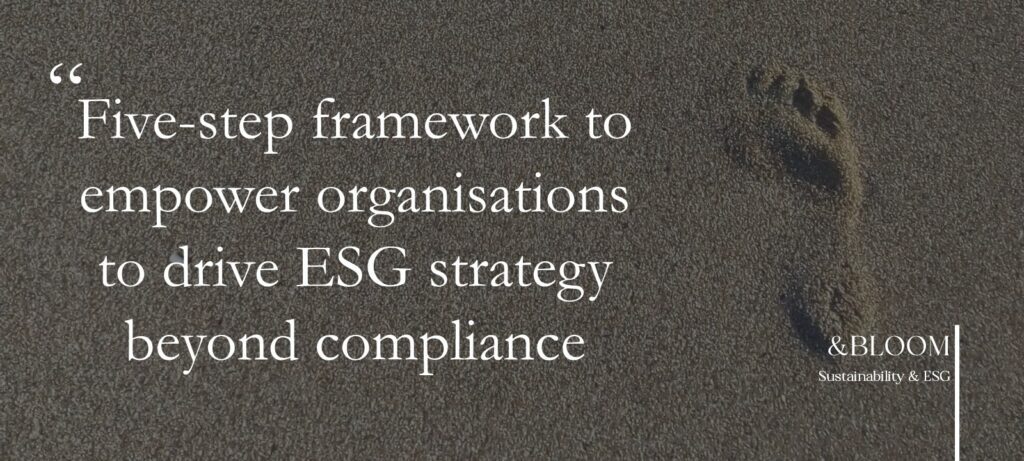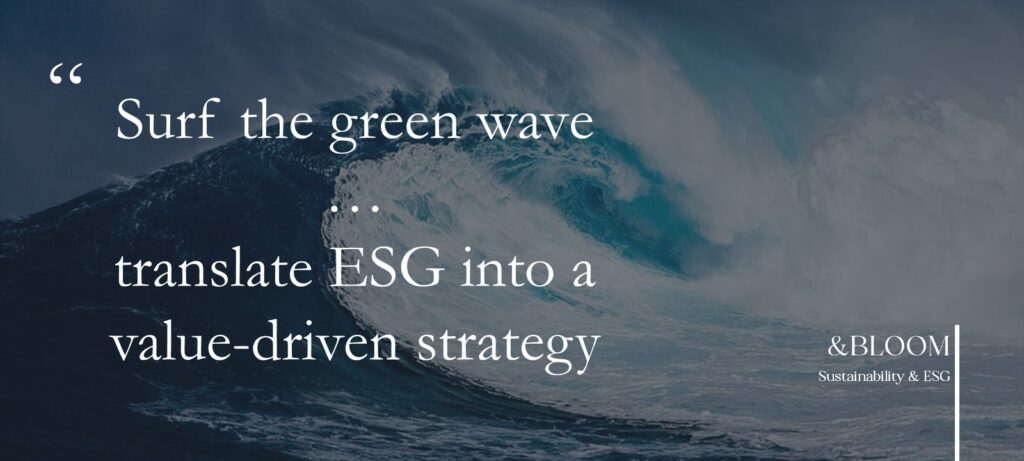Australia’s ASRS: Rethinking ESG Strategies for Competitive Advantage
A Sustainability Journey
A Sustainability Journey
This article was contributed by &BLOOM Sustainability & ESG.
Sustainability is no longer a nice-to-have – it’s a strategic imperative. With the introduction of the Australian Sustainability Reporting Standards (ASRS), businesses must rethink their ESG strategies to remain competitive. This shift is not just about compliance; it’s about securing long-term value and resilience.
The ASRS framework, aligned with the International Sustainability Standards Board (ISSB), requires businesses to disclose sustainability-related risks and opportunities, integrating ESG factors into corporate decision-making. These standards ensure transparency and comparability, empowering investors to assess companies based on their sustainability performance.
A key distinction in ASRS is its dual-tier approach:
• Voluntary Sustainability Reporting (S1): Broader sustainability-related disclosures follow ISSB’s IFRS S1 but remain optional, allowing businesses to progressively integrate ESG factors beyond climate.
• Mandatory Climate-Related Reporting (S2): Businesses must disclose climate related risks and opportunities, aligning with ISSB’s IFRS S2 and global climate disclosure frameworks such as TCFD and GHG Protocol.
Key ASRS requirements include:
• Disclosure of material climate-related risks and opportunities, including governance, strategy, risk management, and metrics & targets
• Integration of climate-related data into financial disclosures
• Enhanced accountability at the board level
With these requirements in place, the competitive landscape in Australia will change as more businesses start disclosing sustainability-related information and action plans accordingly.

Boards and executives need structured discussions that go beyond risk mitigation to uncover value-creation opportunities and remain competitive. This is particularly crucial for a broader ESG strategy, as an exclusive focus on ASRS compliance can divert efforts from strategic integration. &BLOOM’s five-step framework empowers organisations to drive ESG strategy beyond compliance, ensuring a more impactful and value-driven approach. Here’s how:
1. Assess Value Chain Trends & Developments – Identify ESG risks and opportunities across your value chain.
2. Analyse Competitor Actions – Benchmark ESG strategies against peers to stay ahead and identify best practices.
3. Perform a Double Materiality Assessment – Evaluate how ESG factors affect financial performance and how your business impacts society and the environment. This dual perspective aligns with global investor expectations.
4. Evaluate ESG Performance – Analyse current ESG performance against industry standards and regulatory expectations. Identify gaps and areas for improvement to ensure sustainability efforts are data-driven.
5. Develop an Actionable ESG Roadmap – Integrate ESG priorities into the business plan with clear milestones and accountability. ESG should be a core element of business strategy, not a side initiative.

As ASRS becomes a cornerstone of corporate accountability, businesses must act decisively. Those that integrate ESG strategically will not only meet regulatory expectations but also enhance their market position, attract investment, and drive long-term value creation.
In this challenging landscape, &BLOOM helps you surf the green wave, offering tailored solutions to comply with ASRS and translate that into a value-driven strategy.

About the author:
Sydney Straver, Founder & CEO of &BLOOM, is dedicated to moving the needle on ESG in the Pacific from compliance to strategic value creation. With a proven track record of assisting European firms in advancing their ESG agendas, she aims to bring this expertise and best practices to the Pacific. From bespoke training programmes to advisory support, Sydney helps investors and organisations of all sizes in designing and implementing effective ESG strategies, from setting the foundations to surfing the green wave. Unique to her approach is a strategic value creation lens, helping investors and businesses seize opportunities where sustainability meets value creation.
This is an article from a SustainabilityTracker.com Member. The views and opinions we express here don’t necessarily reflect our organisation.